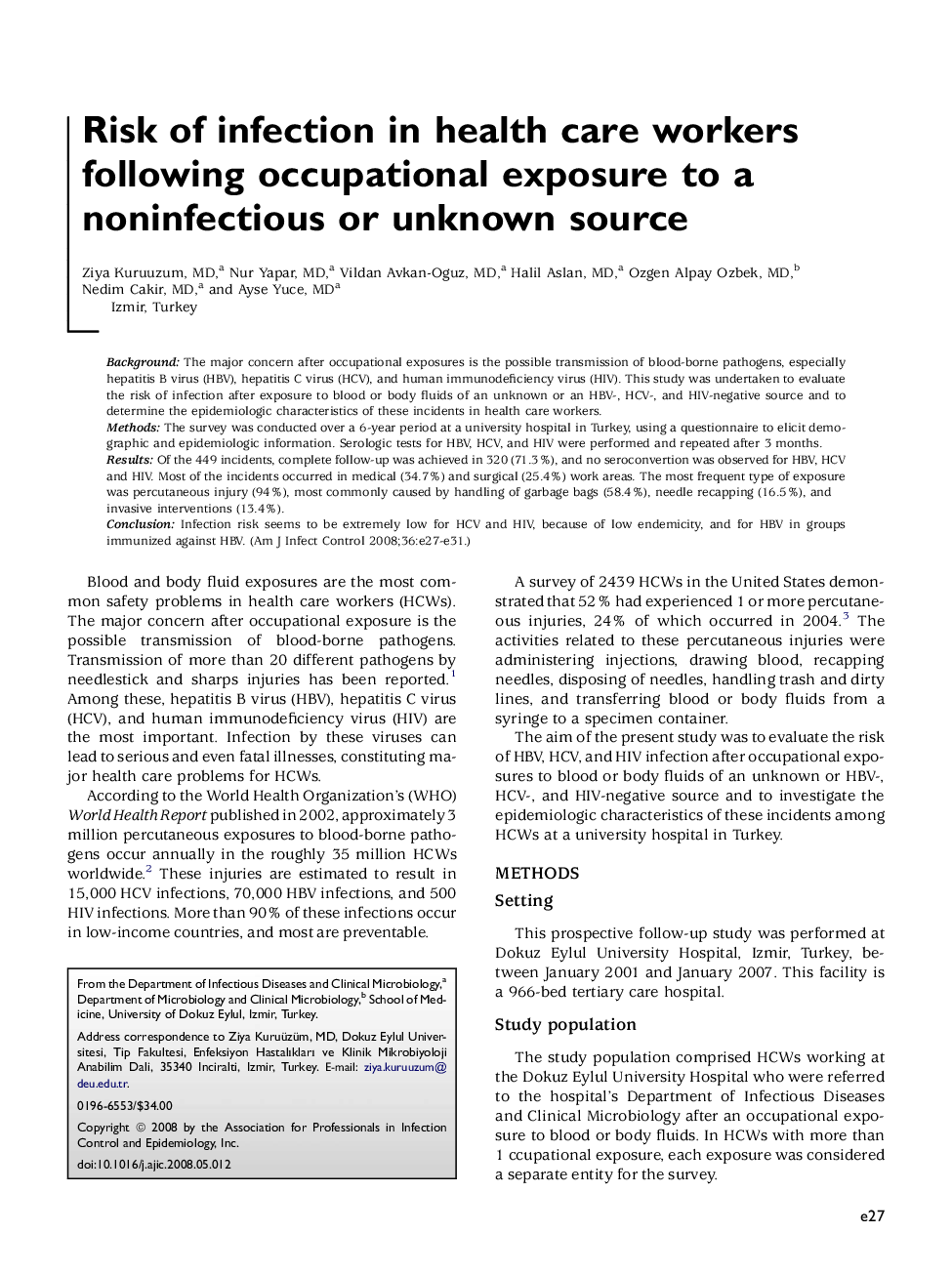| Article ID | Journal | Published Year | Pages | File Type |
|---|---|---|---|---|
| 2638834 | American Journal of Infection Control | 2008 | 5 Pages |
BackgroundThe major concern after occupational exposures is the possible transmission of blood-borne pathogens, especially hepatitis B virus (HBV), hepatitis C virus (HCV), and human immunodeficiency virus (HIV). This study was undertaken to evaluate the risk of infection after exposure to blood or body fluids of an unknown or an HBV-, HCV-, and HIV-negative source and to determine the epidemiologic characteristics of these incidents in health care workers.MethodsThe survey was conducted over a 6-year period at a university hospital in Turkey, using a questionnaire to elicit demographic and epidemiologic information. Serologic tests for HBV, HCV, and HIV were performed and repeated after 3 months.ResultsOf the 449 incidents, complete follow-up was achieved in 320 (71.3%), and no seroconvertion was observed for HBV, HCV and HIV. Most of the incidents occurred in medical (34.7%) and surgical (25.4%) work areas. The most frequent type of exposure was percutaneous injury (94%), most commonly caused by handling of garbage bags (58.4%), needle recapping (16.5%), and invasive interventions (13.4%).ConclusionInfection risk seems to be extremely low for HCV and HIV, because of low endemicity, and for HBV in groups immunized against HBV.
